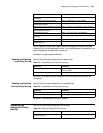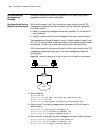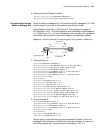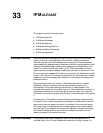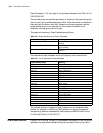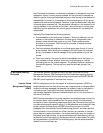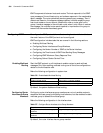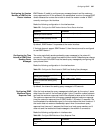
IP Multicast Routing Protocols 501
the IP multicast environment, the destination address of a data packet is not one
address but a group, forming a group address. All the information receivers are
added to a group, and once they access the group, data flowing to the destination
address begin to transmit to the receivers of that particular group. All the group
members can receive the data packet. Therefore, to get the data packet, they have
to become group members first. The data packet transmitter is not required to be
a group member. In the multicast environment, data will be sent to all the group
members, and the subscribers who are not group members will not receive the
data packets.
Generally, IP multicast has the following features:
■ The membership of the host group is dynamic .There is no restriction on the
location or the number of members in the host group. Independent hosts
access or leave the multicast group at any time. These members can be
anywhere on the Internet. One host can be a member of several multicast
groups simultaneously.
■ One host can send data packets to a multicast group even though it is not a
group member. When sending the message to all the IP hosts in a multicast
group, it is necessary to send a message to the group address only, just like
unicast.
■ There is no need for the router to save the membership for all the hosts. It is
only necessary to know whether there is any host belonging to a certain
multicast group on the network segment. The physical interface is located on
the network segment. The host can only save the multicast groups it has
joined.
IP Multicast Routing
Protocols
The multicast protocol includes two parts. One part is the Internet Group
Management Protocol (IGMP) acting as the IP multicast basic signaling protocol.
The other part includes the multicast routing protocols such as DVMRP, PIM-SM,
PIM-DM, which implement IP multicast flow routing.
Internet Group
Management Protocol
(IGMP)
IGMP is a simple protocol for the support of multicast transmission. IGMP is a
simple leave/join protocol that allows end-user nodes and their multicast-enabled
routers to exchange messages that describe the wishes of hosts to participate in
multicast groups. It defines the multicast membership establishment and
maintenance mechanism between hosts and routers, and it is the foundation of
the entire IP multicast.
IGMP informs routers about the group members, and enables routers to know the
information about other members within the group through the hosts directly
connected to them. Application programs can learn that information coming from
one data source goes to a specific group. If a LAN subscriber announces that it has
joined a certain multicast group via IGMP, the multicast routers in the LAN
propagate this information by the multicast routing protocol, and finally add this
LAN as a branch to the multicast tree. When the host, as a member of a certain
group, begins to receive information, the routers periodically carry out queries on
this group, and check whether the group members are still participating. As long
as there is a host still participating, routers can continue to receive data. Only after
all the subscribers in the LAN exit this multicast group, are the related branches
deleted from the multicast tree.



